Identifying Preferences for Mobile Health Applications Self-Monitoring and Self-Management: Focus Group Findings from HIV-Positive Persons and Young Mothers
|
If you are the presenter of this abstract (or if you cite this abstract in a talk or on a poster), please show the QR code in your slide or poster (QR code contains this URL). |
Abstract
Background: Self-management of risk behaviors is a cornerstone of future population health interventions. Using mobile phones for routine self-monitoring and feedback is a cost-efficient strategy for self-management and ecological momentary interventions (EMI). However, mobile health applications need to be designed to be highly attractive and acceptable to a broad range of patients. Objective: To inform the design of an adaptable mobile health application we aimed to identify the thematic similarities and differences in preferences for application features by different patient groups. Methods: Five focus group interviews were conducted with HIV+ persons (n=29) and young mothers (n=24) to inform design of an open-source mobile EMI application called ohmage. Thematic analyses were conducted on the focus group sessions’ notes and transcripts. Results: Both groups considered customization of reminders and prompts as necessary and goal setting, motivational messaging, problem solving, and feedback as attractive. For HIV+ participants, automated and location-based reminders for medication adherence and sharing data with healthcare providers were both acceptable and attractive features. Privacy protection and invasiveness were the primary concerns, particularly around location tracking, illegal drug use, and sexual partner information. Concerns were ameliorated depending on the questions that were being asked, monetary incentives, and password protection. Privacy was not a major concern to mothers who also considered passwords burdensome. Mothers’ preferences focused on customization that supports mood, exercise and eating patterns, and especially using the mobile phone camera to photograph food to increase self-accountability. Conclusions and Discuss: Since this was a focus group study of potential users who had not had experience using the proposed application, our goal was to generate information on the range of anticipated concerns and preferences. We therefore did not query individuals on their agreement for each concern/preference as this would have risked suppressing the idea generation goals of the focus groups; further, it would not have provided valid or reliable data since the participants did not have actual experience using the applications. We did however query the group for general agreement and divergences of opinions. Individualization emerged as the key feature and design principle to reduce user burden and increase attractiveness and acceptability. The use of mobile phones for EMI uniquely enables individualization, context-aware and real-time feedback, and tailored intervention delivery.
Medicine 2.0® is happy to support and promote other conferences and workshops in this area. Contact us to produce, disseminate and promote your conference or workshop under this label and in this event series. In addition, we are always looking for hosts of future World Congresses. Medicine 2.0® is a registered trademark of JMIR Publications Inc., the leading academic ehealth publisher.

This work is licensed under a Creative Commons Attribution 3.0 License.



